#less meat
Explore tagged Tumblr posts
Text
Feels like they’re putting less meat in the hot pockets these days
48K notes
·
View notes
Text
This is what a less destructive food system could look like

If you give a cow 100 grams of protein, you only get 5 grams of protein in return, in the form of meat, and 20 to 30 grams in dairy.
Feeding eight billion people within the boundaries of our planet with healthy and affordable food that also gives farmers a good income? It's possible. A search for outlining a less destructive food system.
Touch our food, and you touch our identity. Changing what we eat and how we produce it creates resistance. Still, things have to change. Our food system comes with unsustainable costs. It generates a third of global greenhouse gas emissions. It thrives on land robbery and destruction of ecosystems, such as the Brazilian Amazon and Cerrado[1]. It pollutes watercourses and soils and makes Flanders a nitrogen pollution hotspot. Farmers have become cogs in an industrial machine, countries depend on fragile supply lines.
Without a food transition, it is impossible to achieve the climate goals and to safeguard biodiversity. It is just about the most difficult and delicate transformation we face. The stakes are high and go to the heart of the political debate. Nevertheless, consensus is growing among experts about three major principles.
1. Closing cycles
Once upon a time, soil, animals, manure and crops were in balance within one farm. That chain has been cut open and rolled out in international supply lines. Producers of crops, fertilisers, meat or dairy products still have little to do with each other. Specialisation and monocultures have pushed the efficiency of the global food industry to its limits.

Soy is a nitrogenous plant that is packed with protein. By importing it, we inject tons of nitrogen into our agriculture.
This 'green revolution' gave the world population a boost, but it is coming up against ecological limits. In a more sustainable model, we have to close cycles again. The 'soy question' alone forces us to do so: soy is a nitrogenous plant that is packed with proteins. This type of bean is extremely efficient to make cows, chickens and pigs grow quickly. But by importing it, we inject tons of nitrogen into our agriculture, the surplus of which accumulates in our nature.
To close cycles, agro-ecological principles can inspire: exchanging flows between agriculture and livestock, nourishing the soil in a healthy way. "Not every crop farmer should therefore have cows," explains Kurt Sannen, a circular agriculture researcher at the Institute for Nature and Forest Research[2] that runs an organic farm itself. "But you do want to evoluate to a network of companies that work together on a regional scale."
In any case, the nitrogen tap has to be closed. The Dutch nitrogen expert Jan Willem Erisman (Leiden University) calculated that we should at least reduce to halve the import of artificial fertiliser from Russia as well as of soy from Brazil, among others. “If you push the circular model to its limit, you don't need much feed concentrates. Cows can be fed with grass, making them useful grassland managers. Pigs and chickens can be fed with residual flows from the food industry.”
If we still want to feed, we can grow protein-rich feed ourselves, such as lupins, peas or grass-clover. Experiments have also been going on in Europe with soy for years. The best known is the Danube soy, which is grown in Central Europe and the Balkans and is used in veggie burgers and soy drinks, among other things. It is also possible in our country, says Professor Sofie Goormachtig, who leads the soy research at Ghent University and VIB.[3] 'We are in search for varieties that are suitable for our climate, but our research results are hopeful.'
In any case, we need to be more careful with the nitrogen in our system. ‘Now it is leaking from all sides,’ says Professor of Ecology Olivier Honnay (KU Leuven). “You can increase absorption efficiency with a combination of agroecology and high-tech. Cover crops can fix nitrogen during winter months. Precision technology teaches us to better understand how much the soil needs. At the same time, we have to plug leaks by recuperating waste streams. We can also recycle nitrogen from human excrement. It is absurd that we allow so much nitrogen to disappear down the drain.”
The recycling idea is gaining ground. But the agro lobby is against it. It would not be enough to feed ourselves, although a large majority of the experts we spoke to vehemently deny this allegation. ‘It is feasible on a large scale,’ say Erisman and Honnay, among others. Europe can feed itself, except for some exotic fruits, tea and cocoa. That is not a challenge.' But there is one important condition.
2. Less meat
This system can only work if we produce less meat. “Everything stands or falls with this,” says Honnay. Erisman also argues that the challenge is not in the cycle, but in the diet: 'If everyone eats as much meat as Europeans or Americans, we cannot feed the world. If we redistribute meat consumption better, we will succeed.”
The problem with livestock farming is the space it takes up. Three-quarters of agricultural land in Flanders is used for the production of animal feed. We make even greater demands on foreign land, such as Brazilian soybean fields, where animal feed is grown. That is not sustainable, and it is inefficient, says Honnay. 'We better grow protein-rich food for people in that space, such as soy, pods, peas and beans. The detour via cattle is very inefficient. If you give a cow 100 grams of protein, you only get 5 grams of protein in return, in the form of meat, and 20 to 30 grams in dairy.'
In a study commissioned by the European Commission, scientists come to the conclusion that we should halve meat consumption. Some platforms, such as EAT-Lancet [4] (which developed a healthy and sustainable diet), suggest even deeper reductions. This evokes resentment, including among the more than a thousand scientists who signed the Dublin declaration[5], in which they stand up for livestock farming. One of them is VUB professor of Food Sciences Frédéric Leroy, who wrote an article about the issue in Nature Food [6]this week. “The debate is too ideological,” he says. “There is a war on meat. We want to add nuance, and indicate that livestock farming has a substantial place in our food system.” However, Leroy does not deny that there is an 'absolute need for transformation, less deforestation and less nitrogen pollution. In some parts of the world, animal production has to increase, in our country you are going to a reduction.'
The most difficult hurdle is in that diet shift. ‘Our consumption pattern is something emotional and deeply ingrained,’ says agricultural economist Erik Mathijs (KU Leuven). Under his chairmanship, a European report will be published on this subject, that states that the government must intervene.[7] "Otherwise it won't work. Consumers must be taken out of their habits. By making sustainable food more accessible. You can play with the tax on vegetables, fruit and meat. Or draw up rules about where which type of food can be stored in the supermarkets. The government must help force the cultural tipping point where meat becomes less the norm.”
Forcing this is quite allowed, says Joost Dessein, bio-engineer and anthropologist (UGent). "We don't have the time to gently take people by the hand. Anyone who believes that consumers will change menus on their own is living in a bubble. My wife, who teaches to students from socially disadvantaged backgrounds, has students in her class who have never seen a leek at home. Go for it drastically. Make largely vegetarian menus in schools, company restaurants or hospitals. Give the incentives to the food industry to offer more vegetarian options. Yes, food is identity. But we can cultivate evolution in that.”
3. Focus on food producers
The farmer is on the defensive. He desperately puts signs with "Save our farmers" in the yard. But in a sustainable model, food producers have a central role. "The answer to their frustration is simple," said Benjamin Bodirsky, a nitrogen and agriculture expert at the Potsdam Institute for Climate Impact Research.[8] "You don't have to stop. But change your revenue model, that is now: big or dead. Stop producing cauliflowers or chops on a large scale, where you barely make a profit. And opt for a model with diversity and larger margins.”
The point of the debate about nitrogen or nature restoration is not that fewer farmers are needed. It is true that they should focus on something else, such as the production of beans, peas or lupins. ‘If you develop a market for those vegetable proteins, it becomes profitable to set up production chains for them,’ says Erik Mathijs. "Then you reach the tipping point where there is also a revenue model."
Kurt Sannen made an estimate with the Institute for Agricultural, Fisheries and Food Research (Ilvo)[9] of what dairy farming can yield for farmers and the environment if we close cycles. “You have a lower yield per cow, but a big cost saving for the farmer – who spends about a third of his expenditure on the purchase of concentrates and fertilisers. Moreover, there is less nitrogen pressure at an area level.”
This transition does not mean that all farmers have to go organic. "Please don't," says Honnay. "That's not realistic. What you produce is more important than how. Growing peas or beans can also be done intensively. In addition, there is room for mixed farms and in vulnerable areas for extensive livestock farming. You pay those livestock farmers for their role as guardians of grasslands.”
The financial incentive is essential. “Farmers are trapped in the industrial model,” says Norbertine Luc Vankrunkelsven, who, as a publicist and founder of Wervel[10], has been arguing for a healthier food system for decades. "They can't get there on their own. The government must guide and compensate them intensively.” The money is available. The European Commission spent 55 billion euros on agricultural subsidies in 2021. However, these resources go largely to intensification and stable techniques. We can just as well use those billions differently.
To make a difference, the industry must go along, some say. 'You see fascinating shifts there,' suggests Nico Muzi, European lobbyist on sustainable food. “From startups experimenting with meat grown in breweries to multinationals making the shift to plant-based. Danish Crown, the largest pig producer in Europe, sees its growth mainly in the vegetable division. Albert Heijn[11] wants to help its customers get 60 percent of their protein from plant-based foods by 2030.”
Although that is a matter for discussion. “There is a real chance that the industry will bend this model to its will,” says Joost Dessein. “Closed cycles can also be dominated by a few powerful players. For me, the food revolution is first and foremost a struggle for farmers' emancipation. Now their frustrations are captured by the far right. And by the agro-industry, that uses them as a camouflage to protect the status quo. Let's face it: the new wind will not blow out of that direction.”
Source
Ine Renson: Zo kan een minder verwoestend voedselsysteem eruitzien, in: De Standaard, 24-06-2023, https://www.standaard.be/cnt/dmf20230623_97208003
[1] The Cerrado is a vast ecoregion of tropical savanna in eastern Brazil, being present in the states of Goiás, Mato Grosso do Sul, Mato Grosso, Tocantins, Maranhão, Piauí, Bahia, Minas Gerais, São Paulo, Paran�� and the Federal District. The core areas of the Cerrado biome are the Brazilian highlands – the Planalto. The main habitat types of the Cerrado consist of forest savanna, wooded savanna, park savanna and gramineous-woody savanna. The Cerrado also includes savanna wetlands and gallery forests
[2] The Instituut voor Natuur- en Bosonderzoek (Institute for Nature and Forest Research), usually abbreviated as INBO, is the research centre for nature of Flanders. It falls under the Environment, Nature and Energy (LNE) policy area of the Flemish government. INBO is the independent research institute of the Flemish government that supports and evaluates biodiversity policy and management through applied scientific research, data and knowledge access.
[3] VIB is a research institute located in Flanders, Belgium. The main objective of VIB is to strengthen the excellence of Flemish life sciences research and to turn the results into new economic growth.
[4] This report was prepared by EAT and is an adapted summary of the Commission Food in The Anthropocene: the EAT-Lancet Commission on Healthy Diets From Sustainable Food Systems. https://eatforum.org/eat-lancet-commission/eat-lancet-commission-summary-report/
[5] Published in Animal Frontiers, the official journal of the American Society of Animal Science, of the European Federation of Animal Sciences and of the American Meat Science Association, the official proceedings of the Dublin Declaration, the global research scientific literature emphasizing the nutritional, economic and environmental benefits of meat production. More than 1000 scientists from all over the world have joined the initiative, contributing through their work with studies and research. https://www.efanews.eu/item/31673-dublin-declaration-over-a-thousand-scientists-adhere-to-it.html
[6] Leroy, F., Ederer, P. The Dublin Declaration of Scientists on the Societal Role of Livestock. Nat Food 4, 438–439 (2023). https://doi.org/10.1038/s43016-023-00784-z,
[7] PHD THESIS (LIRIAS); Exploring resilience capacities for managing challenges in agriculture; Verkenning van veerkrachtcapaciteiten om uitdagingen in de landbouw aan te gaan; Coopmans, Isabeau; Mathijs, Erik (Supervisor); Wauters, Erwin (Co supervisor);2023-02-01
[8] The Potsdam Institute for Climate Impact Research (PIK, German: Potsdam-Institut für Klimafolgenforschung) is a German government-funded research institute addressing crucial scientific questions in the fields of global change, climate impacts, and sustainable development. Ranked among the top environmental think tanks worldwide, it is one of the leading research institutions and part of a global network of scientific and academic institutions working on questions of global environmental change. It is a member of the Leibniz Association, whose institutions perform research on subjects of high relevance to society.
[9] The Instituut voor Landbouw-, Visserij- en Voedingsonderzoek (ILVO) (Institute for Agricultural, Fisheries and Food Research) is an independent scientific research centre of the Government of Flanders. It is commissioned by the government to contribute to making the agriculture, fisheries and agri-food sector more sustainable. Initially in Flanders, but by extension also in Belgium, Europe and the rest of the world.
[10] Wervel (=Vertebra) is a movement that works on a healthy food system from a connection. We raise issues and make alternatives visible. With fair prices for farmers, people who take food into their own hands again and the restorative power of agroecology. In short: with respect for farmers, eaters and our planet. https://wervel.be/over-ons/
[11] Albert Heijn is the largest supermarket chain in the Netherlands with a market share of 34.8% in 2020. It was founded in 1887, and has been part of Ahold Delhaize since 2016.
1 note
·
View note
Text



#mitsuba#minamoto kou#mitsukou#toilet bound hanako kun#tbhk#tbhk fanart#doodle#comic#i couldnt have been less bothered with drawing that heart properly so its just a mystery meat cube thing#astrocket!
819 notes
·
View notes
Text
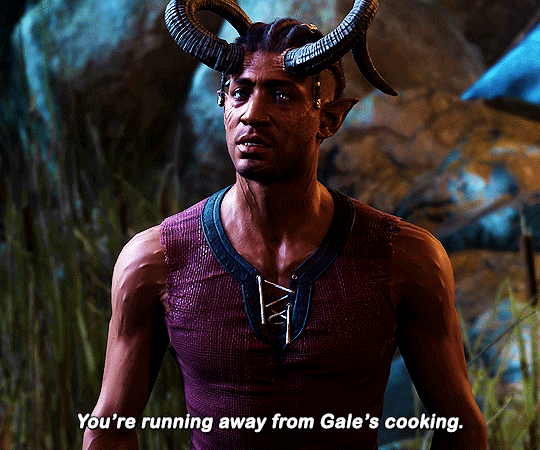
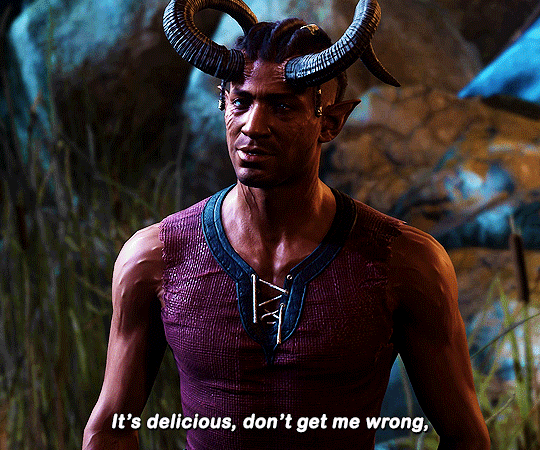
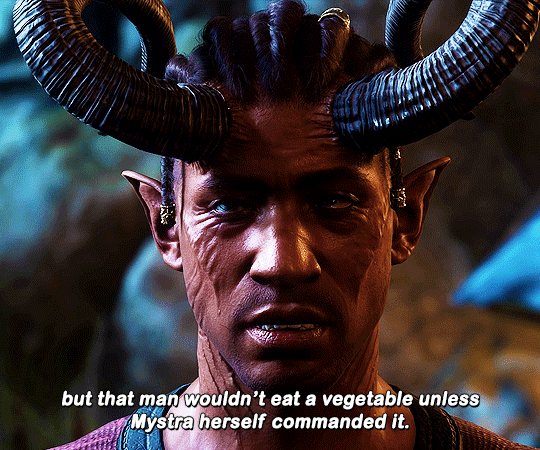
Let me think... why are you really here?
#baldur's gate#baldur's gate 3#bg3#wyll#wyll ravengard#gale dekarios#<- mentioned#bg3edit#gamingedit#*#i had to jump through a bunch of hoops to get this dialogue but i really wanted to gif it lmao#you can't have met volo at all or he has to be dead#and karlach can't be recruited at the time#gale: making meat stew again#the emperor: (currently taking the form of mystra to try getting him to listen) do we think maybe a vegetable would cause less despair
2K notes
·
View notes
Note
How are you?
I am doing the best I can given the circumstances! (Horse dead, scammed thousands, got bald)
#There is an unspeakable agony in the marrow of my bones#I am rotting from the inside out in real time and I can do nothing but watch the decay and pretend to find beauty in it#But the maggots burrowing inside me love me more than anyone else ever could#For they have tasted me as I truly am and decided my rotten meat is something to savor#I am doing about as alright as any of you Number One#The earth still turns and I will wake up again tomorrow a little less rotten
675 notes
·
View notes
Text
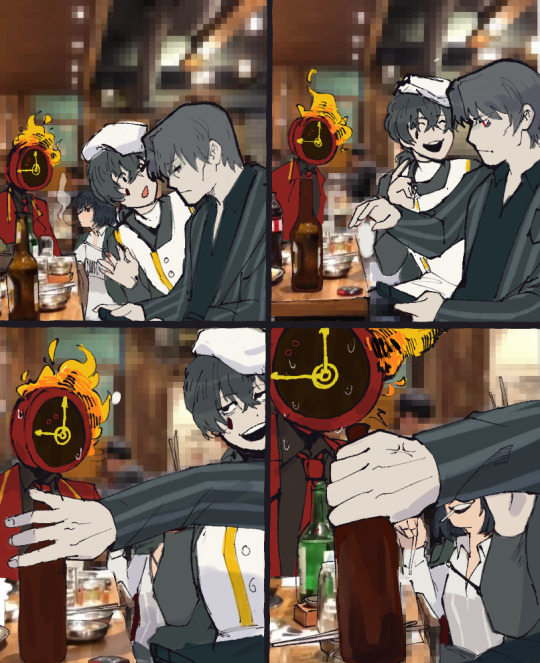
not a good idea to bring that one on the bus, no
#driftoodles#limbus company#yi sang#ryoshu#vergilius#dante#limbus company spoilers#'oh yeah ring yi sang thats awesome' yeah i guess it is#if you're prepared to watch vergilius turn a man inside out on sheer instinct i guess#can this legslly be deemed leviathan art?#...no#leviathan spoilers#maybe?#....probably not-#vergilius is about to reduce this man to a meat splatter and ryoshu is SO excited. dante less so#i drew this yesrerday when he was teased btw bc it was the first thought that came to mind#but i can post it now because hes been officially announced
840 notes
·
View notes
Text


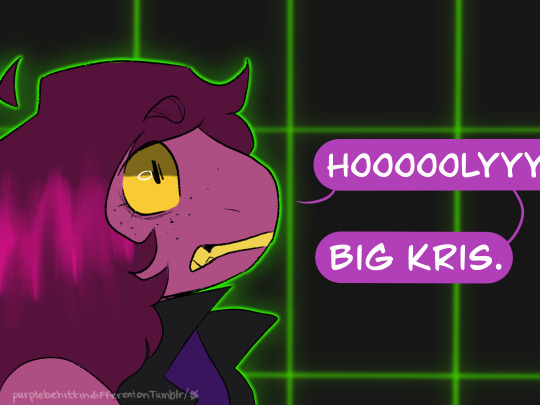
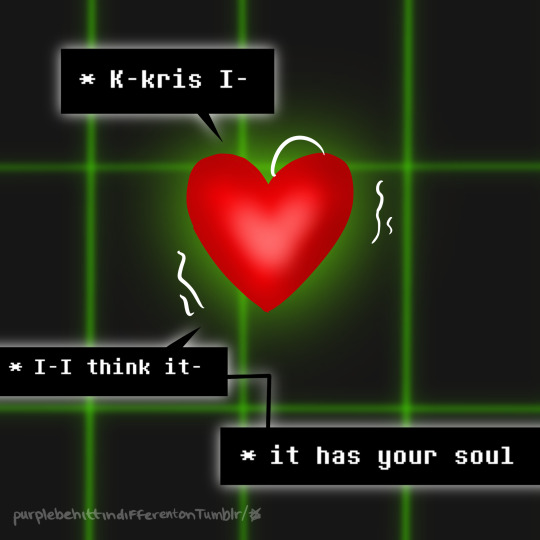

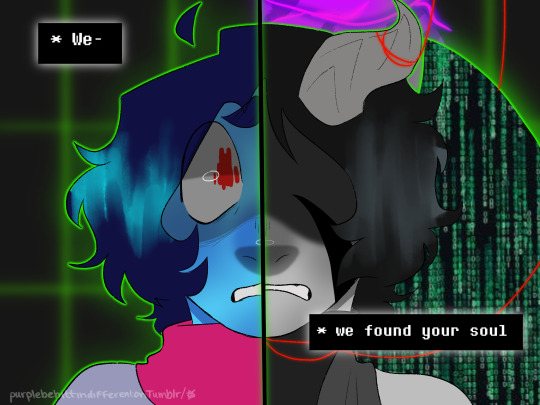

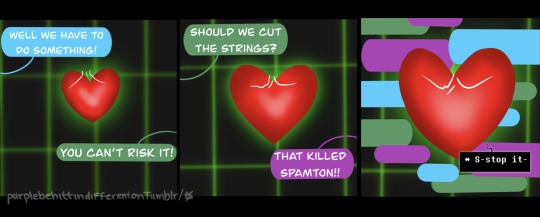
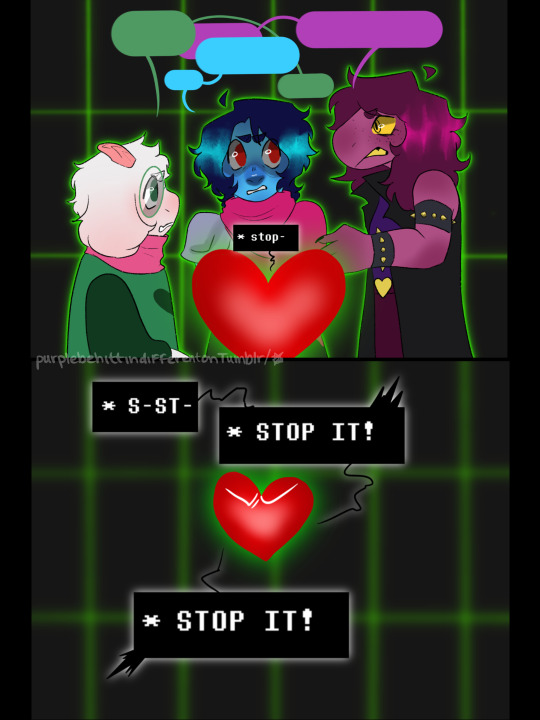

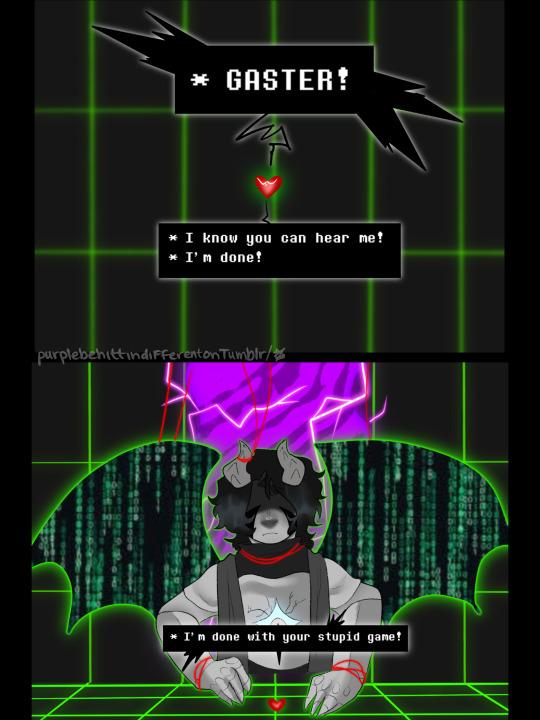


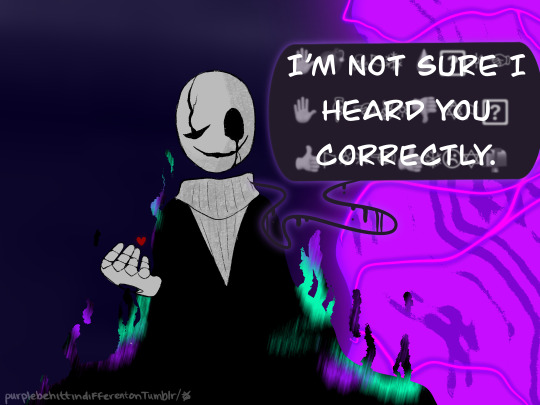

When I said self reflection is good- I did not mean it this literally
Masterpost
prev (3::6) // Next (3:8)
#art#my art#deltarune#reconnecting#reconnecting update#I’m sorry this one feels like it has less meat in it than the others#wahooo#reconnecting player#kris deltarune#gaster#GASTERS HERE???!!!#OOOOOH HE MAD#BUT SO IS PLAYERRRR#DRAMA DRAMA DRAMA#someone on the update announcement said they felt like someone was gonna die#YOURE RIGHT YAYY 🎉#teehee#so many people debating on who big monster is
577 notes
·
View notes
Note
Do you have a recipe for quail you would be willing to share? I saw a six-pack of frozen quail at my local grocery store, and I would love to give them a try, but they're a new-to-me ingredient! Thank you.
I was advised to marinate in ranch and pan fry, by someone that eats wild hunted quail, and I'm told that pan frying before baking is best, but honestly my favorite is quail pot pie rather than eating the quail on its own. They're EXCEPTIONALLY easy to dry out, especially if they are skinless (and mine are because it's too much trouble to pluck)
You chop onions and garlic, put in a large pan, a cup of water (or I use stock I made with quail bones from previous meals, but chicken stock would probably be fine), some salt if you haven't used stock, and the whole quail carcasses. Cover and simmer low-medium until the quail are done through (usually like 45 mins? For me on my stove, you would need to experiment to be sure on yours), turning over once during cooking. While that's going, chop potatoes and start them boiling, then chop carrots and add them halfway through the potato boil so they're not mushy. I thaw some frozen broccoli but don't cook it further, just chop it up. I usually also chop mushrooms up and don't cook them.
Once the quail are done, remove as much meat as you can, chop any large pieces into smaller pieces. You can toss the onions and garlic or drain and hold some back, it doesn't really matter. Drain the potatoes/carrots pot, and put everything into a saucepan with a jar of gravy (I use turkey gravy). While it's warming up, put a crust in a pie pan, and then dump the mix into the pie pan and cover with another crust if you want. Bake for 1 hour at 350F, let cool, and enjoy.
You can leave out pretty much anything you want or swap it for whatever or add stuff. My partner likes peas in his pot pie (texture nightmare for me). The amounts don't really matter for the rest, as long as it fits in your pie pan. I find 2 decent sized redskin potatoes, 4 quail, a few baby carrots (like maybe 6-8 good sized ones not those skinny bitches), a small bowl of broccoli+mushrooms (together) seems to be about right for me.
It does have a different flavor than chicken pot pie, but I like it. Also be REALLY thorough about checking your meat for bones, they have so many tiny bones. I pretty much always miss some little fucker somehow, so don't be surprised if you do, too.
I like mine with a bit of cheese shredded on top!
#recipes#quail#a whole quail's worth of meat (a GOOD sized quail#like a jumbo quail#is roughly about the size of a small chicken breast#not like a gross saline injected meat bird breast#and your grocery store probably sells standard size which is going to be less#so you'll probably be using all 6 instead of 4#asks#anon asks
156 notes
·
View notes
Note
In your Babysitter Vlad AU, do you think the Portal accident would still happen? Or would Vlad be there to stop Danny from going into the portal? Or if it did happen how would a Vlad who has had some time to grow as a person and come to care for Danny and Jazz react?
Yes, Danny most likely still has his portal accident in this AU, pretty much exactly how it goes in canon. Some key details are as follows:
-Since he and Jazz have first hand experienced a lot of Weird Ghost Stuff together since they were kids, he voluntarily tells her his secret very quickly.
-Danny and Jazz know Vlad....isn't normal. He obviously never told them anything, but both of them witnessed a LOT of very weird and unexplainable things in regards to him during those stints as their babysitter. They were just kids, so they don't remember everything perfectly clearly, but they're in agreement nothing they experienced was a dream.
-By the time Danny gets himself zapped, Vlad hasn't babysat them in several years. He probably stopped before Danny's tenth birthday because the kids were old enough by that point to articulate that their uncle might be a little bit more than just a human. He still sends them birthday cards, though, and Danny and Jazz remember him fondly.
-All of this taken into consideration, Jazz immediately tries to convince Danny to call Vlad after he tells her about his powers. Danny says no, because that sounds like it has the potential to be the most uncomfortable, cringeworthy conversation of his life. Not because he doesn't trust Vlad, but because he really doesn't know how to call up his bizarre pseudo-family member who he hasn't seen in person since he was about nine, and tell him "Hey, Uncle Vlad, remember how you used to babysit me when I was a kid? Cool. I'm pretty sure I just died in my parent's portal."
-Bitter Reunions is really Awkward Reunions in this AU. Jazz spends the entire stay at their uncle's castle trying to get him and Danny to talk about the you know what. Neither one of them is cooperating.
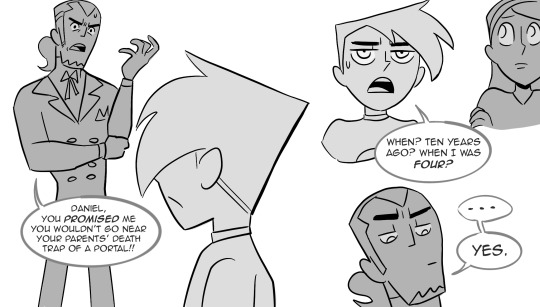
Vlad is horrified and exasperated but overall hardly surprised. That mentorship offer doesn't come with a "renounce your father" requirement in this AU, so Danny probably takes him up on it!
#the meat of this AU happens when Jazz and Danny are very very young. I've thought less about what happens afterward.#danny phantom#asks#badger cereal#babysitter vlad au
1K notes
·
View notes
Text

This is what it would be like if Ralsei ate a burger (I ate a burger like an hour and a half ago)
#my art#deltarune#ralsei#dt#noelle is there because I was remembering her unique burger reaction where she doesn't like that it has meat and heals less#And also because I realized I don't have many drawings of noelle so my intent was to increase her numbers.#But my hand was starting to feel weird after ralsei i forgot how to hold a pen.
55 notes
·
View notes
Text
My biggest hope for the Mighty Nein animated series is that they capture the tone correctly and don't use the same tone for TMN that they used for TLOVM.
I thought the tone in TLOVM was great for Vox Machina, it was littered with Scanlan style adult humor that suited the adult-style comedy/drama very well but I dont think that exact same tone would work well for the Mighty Nein.
Even though TMN had dirty humor, I think it's style of humor was different than TLOVM. Sex scene cut-aways and projectile vomiting, over the top gore and poop humor throwaway gags I don't think would hit the way for TMN as it does in TLOVM even though it exists in TMN.
I think that in the way that TLOVM is framed around Scanlan style humor, I think TMN is framed around Jester humor- which is still dirty, but sillier and a bit more naive and familiar that fits the mature tone of TMN much better than the throwaway humor of TLOVM.
And i'm sure TMN will be gore-y too but sometimes the gore in TLOVM was over the top in a way that detracted from some of the major villain deaths and made them less impactful when compared to some disposable npc whose skull gets exploded in a few scenes prior. What I mean is that I hope it's gore-y where it counts. Like Caleb crushing the guards while storming the sanitarium in rage and vengeance is not as impactful if everyone dies in a similar fashion all the time, if you know what I mean?
#critical role#tmn#tmna#the legends of vox machina#the mighty nein#the mighty nein animated#tlovm#sometimes i feel that too much gore makes characters seem disposable? if that makes sense? like you never get attached to npcs bc it feels#less like characters and more like meat waiting to be torn apart in gruesome ways. Archie had this problem in season 1 I feel.#his sacrifice didn't feel impactful at all. he felt like a throwaway and part of that i feel is because his death didnt feel unique#I think too much gore also starts to feel less realistic in a setting. it feels fine for TLOVM bc I think TLOVM plays with tropes in a way#that works for them and their characters but wont always work for the style of TMN
302 notes
·
View notes
Text
listen to me. put a damp (DAMP not wet) paper towel over your food before you microwave it if it has bread, rice, anything like that as a major component. microwave it for about 10-20 seconds longer than you otherwise would.
#spinning my web#this will make ur microwaved food 100 times tastier i prommy#i specify grains bc thats what its most helpful with but you can do it with anything and itll make it less awful tbh#its also really nice for meat#makes it not dry out
146 notes
·
View notes
Text

sally sketch dump\trying to understand his face while new actual posts are cooking
#sally face fanart#sally face#sal fisher fanart#sal fisher#my things#sketch#doodle#i didn't forget his earrings ONCE#thats amazing#i think he'd have less face meat than that but whatever#i'll do it next time
139 notes
·
View notes
Text

How to serve a man
#laura chastel#my art#hellsing oc#my oc#cw mild gore#cw blood#Laura finds out about gender roles#women belong in the kitchen? say less!#she's making meatballs :)#i drew this at the airport#a nice old man asked me about it. before I put in all the blood and meat#the finger was my mom's idea#i asked her if the meat (zoomed in bottom left) was realistic and she asked to see the whole thing#and I panicked bc I thought she was gonna judge me#but after 2 seconds of silence she said 'well you should put a little hand or a little foot there then'
232 notes
·
View notes
Text
youtube
i know this is a long haul video, but it's also an extremely good breakdown of the myth of self-sustainability homesteading and how you should never believe everything you see online or in books. also a little bit about how joel salatin suck ass, actually.
this shit is not easy and it doesn't make money. i am only allowed to do this because my spouse is a software engineer in the video game industry. don't fall for the promise of being able to pay your way via a small farm. the only thing small-scale homesteading gives you is a sense of accomplishment, a connection to your food, and at least one joint injury that you will need to go to physical therapy for. i will never talk anyone out of wanting to grow their own food, because i think it's an extremely good and important thing to do, but i will always encourage you to do it within your means with a realistic vision of that future.
#ag talk#also why i think rabbits are good for family meat production#they are very inexpensive compared to other livestock#they still have a cost! but it's less than even chickens and they don't need a ton of space to live in like chickens do#it's also so nice to hear from a homesteader who isn't a religious vaguely right-wing traditional family values guy#those are...shockingly few and far between online :/#i stopped watching most homesteading youtubers because of that#it was a little too christian and a little too prosperity doctrine even when religion wasn't really spoken about much#the way they talk about self-sustainability really rubbed me the wrong way as someone raised in an extremely culty fundie denomination#i had a similar journey to morgan here with the discovering people like joel salatin and justin rhodes#and being very inspired and learning a lot from them. they were valuable to me#but now i know that a lot of it is just....not how it works
61 notes
·
View notes